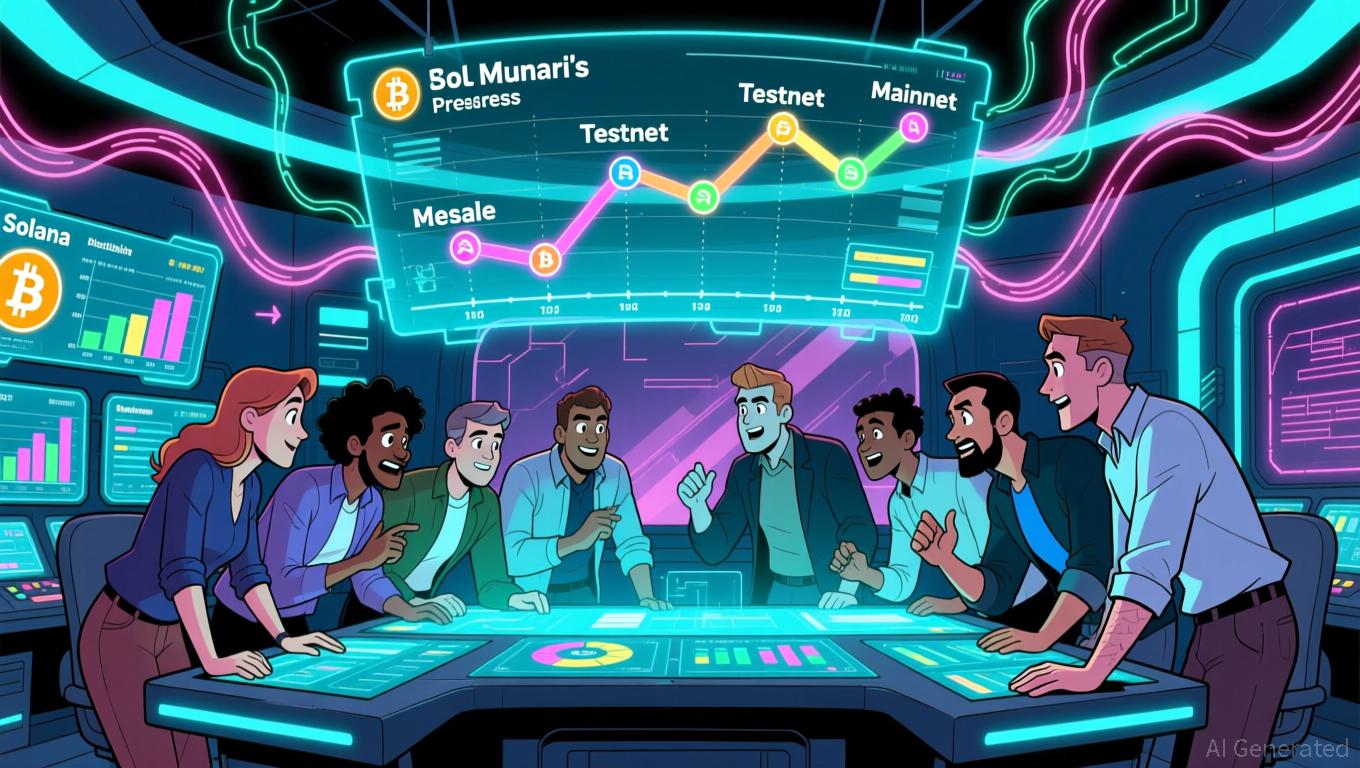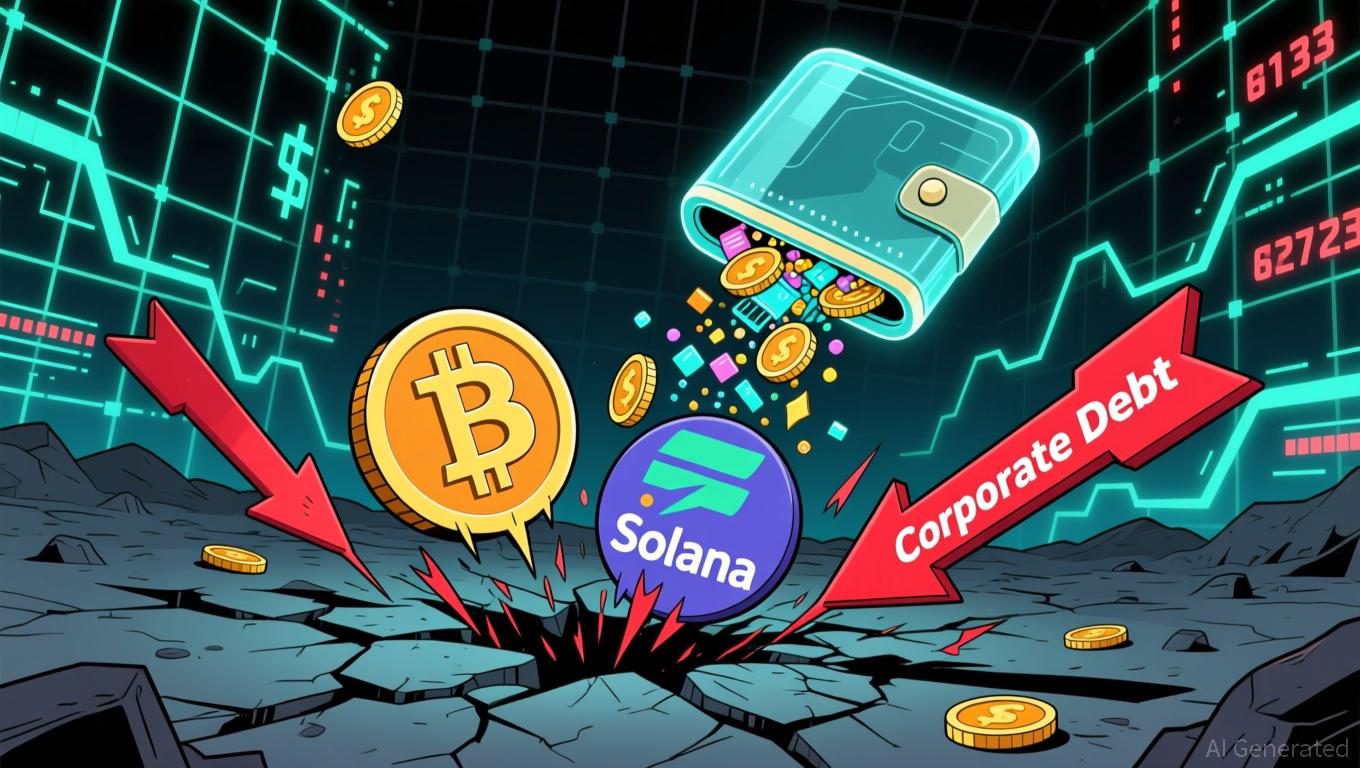Vitalik Buterin Backs ZKsync: What This Means for Layer-2 Expansion
- Vitalik Buterin's endorsement of ZKsync's Atlas upgrade highlights its strategic role in Ethereum's post-merge scalability roadmap. - The upgrade enables 15,000 TPS, one-second finality, and near-zero fees through ZK proofs and Layer 1-2 liquidity sharing. - ZK token surged 50% post-endorsement, reflecting institutional confidence in ZKsync's enterprise-grade infrastructure potential. - Upcoming Fusaka upgrade aims to double throughput to 30,000 TPS, positioning ZKsync as a leading ZK-based Layer-2 solut
Strategic Impact of Buterin’s Support
Vitalik Buterin’s endorsement of ZKsync goes beyond mere symbolism; it demonstrates a deliberate alignment with Ethereum’s strategic direction.
Launched in November 2025, the Atlas upgrade brings a range of new features designed to directly address these issues.
Technical Progress and Ecosystem Integration
The Atlas upgrade’s standout feature is the integration of the ZK Stack, which enables effortless liquidity sharing between Ethereum’s Layer 1 and Layer 2.
This level of interoperability is especially important for institutional users. By positioning Ethereum as a real-time liquidity center, ZKsync addresses the capital inefficiencies that have previously limited blockchain scalability. Developers can now build applications with greater assurance regarding both performance and cost stability—an essential consideration for businesses exploring blockchain adoption.
Market Dynamics and Token Economics
The introduction of the Atlas upgrade has also led to a significant change in market sentiment.
Upcoming Upgrades and Market Position
Looking forward, ZKsync’s Fusaka upgrade,
Investment Perspective
For investors, the combination of technological progress, institutional uptake, and Buterin’s endorsement presents a compelling case for ZKsync. The project’s alignment with Ethereum’s post-merge priorities—scalability, security, and interoperability—positions it as a major force in the Layer-2 sector. Nevertheless, challenges remain, including regulatory risks and competition from other scaling solutions.
Despite these uncertainties, the market’s reaction to the Atlas upgrade—evident in transaction volumes and token performance—indicates that ZKsync has reached a new level of credibility. As the Fusaka upgrade nears, attention will turn to execution and tangible adoption. For now, ZK-based technologies have moved from concept to becoming integral to Ethereum’s future.
Disclaimer: The content of this article solely reflects the author's opinion and does not represent the platform in any capacity. This article is not intended to serve as a reference for making investment decisions.
You may also like
Bitcoin News Update: Innovative Tokenomics and Interoperable Cross-Chain Features: The Key to Altcoin Success in 2025
- 2025 altcoin market highlights Bitcoin Munari (BTCM), XRP Tundra, and Mutuum Finance (MUTM) leveraging multi-chain infrastructure and structured presales. - BTCM's fixed-supply model ($0.35 presale) and Solana-based SPL token deployment aim for 2027 Layer-1 migration with EVM compatibility and privacy features. - XRP Tundra offers cross-chain yield via dual-token system (TUNDRA-S/X) with $0.214 Phase 12 pricing and audited Cryo Vaults for Bitcoin holders. - Mutuum Finance (MUTM) nears 99% Phase 6 allocat

Bitcoin Updates: Institutional Funds Move: AI ETFs Gain Momentum Amid Growing Crypto Debt Issues
- Bitcoin and Solana face renewed selling pressure as digital asset treasury companies (DATCos) offload holdings amid $42.7B corporate debt inflows into crypto. - DATCos, underwater on $126K Bitcoin peak investments, approach parity in market-to-net-asset-value ratios, triggering 40% Solana treasury value declines since October. - Institutional capital shifts toward AI ETFs (e.g., Global X AI ETF) as firms prioritize AI infrastructure investments over crypto, linking performance to tech stock volatility. -

Fed Policy Split Drives Derivatives Activity as Crypto Teeters on Brink of Easing
- Fed policy uncertainty drives derivatives bets, with CME FedWatch pricing 69.7% chance of 25-bp December rate cut amid mixed inflation and labor data. - Crypto markets anticipate easing cycle, but remain fragile as Crypto Fear & Greed Index hits "extreme fear" level 14 despite Coinbase's bearish odds assessment. - Crude oil drops on U.S. Ukraine peace plan and OPEC output hike, while dollar strength compounds risks for rate-cut-sensitive commodities. - CME Group faces scrutiny after $2M insider sale, yet

Modern Monetary Theory and the Valuation of Cryptocurrencies: Do MMT Principles Support Rapid Increases in Token Prices?
- 2025 analysis explores whether Modern Monetary Theory (MMT) can justify Momentum (MMT) token's 1,300% price surge. - Token's rise stems from Binance airdrops, U.S./EU regulatory clarity, and institutional investment, not MMT principles. - Academic research highlights crypto valuation duality: network effects coexist with speculative behavior driven by heterogeneous expectations. - MMT influences macroeconomic frameworks (CBDCs, fiscal policy) but fails to predict token-specific surges dominated by retail